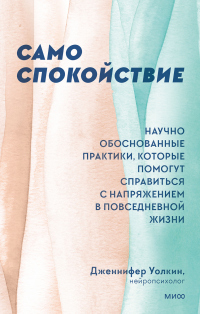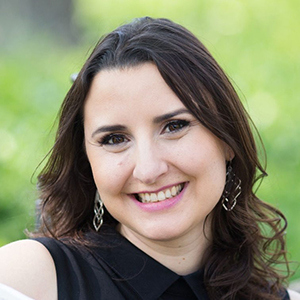Онлайн книга

Примечания книги
1
Nyanaponika Thera, The Heart of Buddhist Meditation: A Handbook of Mental Training on the Buddha’s Way of Mindfulness (London: Rider, 1962).
2
Здесь и далее в квадратных скобках — ссылки на источники, приведенные в конце книги, в разделе «Литература». Прим. пер.
3
Jon Kabat-Zinn, Full Catastrophe Living (New York: Dell Publishing, 1991).
4
Susan Nolen-Hoeksema, “The Role of Rumination in Depressive Disorders and Mixed Anxiety/Depressive Symptoms,” Journal of Abnormal Psychology 109, no. 3 (2000): 504–11.
5
Tammi Kral et al., “Impact of Short- and Long-Term Mindfulness Meditation Training on Amygdala Reactivity to Emotional Stimuli,” NeuroImage 181 (2018): 301–13.
6
Ronald Glaser et al., “Chronic Stress Modulates the Immune Response to a Pneumococcal Pneumonia Vaccine,” Psychosomatic Medicine 62, no. 6 (2000): 804–7.
7
Michael S. Chin and Stefanos N. Kales, “Understanding Mind-Body Disciplines: A Pilot Study of Paced Breathing and Dynamic Muscle Contraction on Autonomic Nervous System Reactivity,” Stress Health 35, no. 4 (2019): 542–48.
8
Britta K. Hölzel et al., “Mindfulness Practice Leads to Increases in Regional Brain Gray Matter Density,” Psychiatry Research 191, no. 1 (2011): 36–43; William R. Marchand, “Neural Mechanisms of Mindfulness and Meditation: Evidence from Neuroimaging Studies,” World Journal of Radiology 6, no. 7 (2014): 471–79.
9
Julie Corliss, “Mindfulness Meditation May Ease Anxiety, Mental Stress,” Harvard Health Blog, January 9, 2014. https://www.health.harvard.edu/blog/mindfulness-meditation-may-ease-anxiety-mental-stress-201401086967.
10
Elizabeth A. Hoge et al., “Randomized Controlled Trial of Mindfulness Meditation for Generalized Anxiety Disorder: Effects on Anxiety and Stress Reactivity,” Journal of Clinical Psychiatry 74, no. 8 (2013): 786–92.
11
Britta K. Hölzel et al., “Neural Mechanisms of Symptom Improvements in Generalized Anxiety Disorder Following Mindfulness Training,” NeuroImage: Clinical 2 (2013): 448–58.
12
Jon Kabat-Zinn, Leslie Lipworth, and Robert Burney, “The Clinical Use of Mindfulness Meditation for the Self-Regulation of Chronic Pain,” Journal of Behavioral Medicine 8, no. 2 (1985): 163–90.
13
David S. Black and George M. Slavich, “Mindfulness Meditation and the Immune System: A Systematic Review of Randomized Controlled Trials,” Annals of the New York Academy of Sciences 1373, no. 1 (2016): 13–24.
14
Richard J. Davidson et al., “Alterations in Brain and Immune Function Produced by Mindfulness Meditation,” Psychosomatic Medicine 65, no. 4 (2003): 564–70.
15
Anthony P. King et al., “Altered Default Mode Network (DMN) Resting State Functional Connectivity Following a Mindfulness-Based Exposure Therapy for Posttraumatic Stress Disorder (PTSD) in Combat Veterans of Afghanistan and Iraq,” Depression and Anxiety 33, no. 4 (2016): 289–99.
16
Charles Duhigg, The Power of Habit: Why We Do What We Do in Life and Business (New York: Random House, 2012).
17
Barbara L. Fredrickson et al., “Do Contemplative Moments Matter? Effects of Informal Meditation on Emotions and Perceived Social Integration,” Mindfulness 10, no. 9 (2019): 1915–25.
18
Karin Chellew et al., “The Effect of Progressive Muscle Relaxation on Daily Cortisol Secretion,” Stress 18, no. 5 (2015): 538–44.
19
Wolfgang Luthe and Johannes H. Shultz, Applications in Psychotherapy: Autogenic Therapy, vol. 3, ed. Wolfgang Luthe (New York: Grune and Stratton, 1969).
20
Friedhelm Stetter and Sirko Kupper, “Autogenic Training: A Meta-Analysis of Clinical Outcome Studies,” Applied Psychophysiology and Biofeedback 27, no. 1 (2002): 45–98.
21
Joe Utay and Megan Miller, “Guided Imagery as an Effective Therapeutic Technique: A Brief Review of Its History and Efficacy Research,” Journal of Instructional Psychology 33, no. 1 (2006): 40–43.
22
Marc J. Weigensberg et al., “Acute Effects of Stress-Reduction Interactive Guided Imagery on Salivary Cortisol in Overweight Latino Adolescents,” Journal of Alternative and Complementary Medicine 15, no. 3 (2009): 297–303.
23
Человек с нарушением восприятия, в результате этого нарушения сигнал одному органу чувств откликается в другом. Прим. пер.
24
Jai Dudeja, “Benefits of Tadasana, Zhan Zhuang, and Other Standing Meditation Techniques,” International Journal of Research and Analytical Reviews 6, no. 2 (2019): 607–18.
25
Johannes Graser and Ulrich Stangier, “Compassion and Loving-Kindness Meditation: An Overview and Prospects for the Application in Clinical Samples,” Harvard Review of Psychiatry 26, no. 4 (2018): 201–15.
26
Труд заботы — термин, которым обозначают бесплатный труд по уходу за детьми, престарелыми родственниками, больными людьми, обычно лежащий на плечах женщин или медработников и являющийся основной причиной выгорания. Прим. пер.
27
Stefan G. Hofmann, Paul Grossman, and Devon E. Hinton, “Loving-Kindness and Compassion Meditation: Potential for Psychological Interventions,” Clinical Psychology Review 31, no. 7 (2011): 1126–32.
28
Jennifer S. Mascaro et al., “The Neural Mediators of Kindness-Based Meditation: A Theoretical Model,” Frontiers in Psychology 6 (2015): 109.
29
Joseph B. Nelson, “Mindful Eating: The Art of Presence While You Eat,” Diabetes Spectrum: A Publication of the American Diabetes Association 30, no. 3 (2017): 171–74.
30
Zaynah Khan and Zainab F. Zadeh, “Mindful Eating and Its Relationship with Mental Well-Being,” Procedia: Social and Behavioral Sciences 159 (2014): 69–73.
31
Thich Nhat Hanh, The Miracle of Mindfulness: An Introduction to the Practice of Meditation (Boston: Beacon Press, 1999).
32
Adam W. Hanley et al., “Washing Dishes to Wash Dishes: Brief Introduction in an Informal Mindfulness Practice, Mindfulness 6 (2015): 1095–1103.
33
Michael Teut et al., “Mindful Walking in Psychologically Distressed Individuals: A Randomized Controlled Trial,” Evidence-Based Complementary and Alternative Medicine 2013 (July 2013): Article ID 489856.
34
Jackie Andrade, “What Does Doodling Do?” Applied Cognitive Psychology 24, no. 1 (2010): 100–106.
35
Girija Kaimal, Kendra Ray, and Juan Muniz, “Reduction of Cortisol Levels and Participants’ Responses Following Art Making,” Art Therapy 33, no. 2 (2016): 74–80.
36
Автор книги «Дудлинг для творческих людей» продвигает рисование как способ развития творческого мышления, улучшения работы в команде. Прим. пер.
37
Sunni Brown, The Doodle Revolution: Unlock the Power to Think Differently, rep. ed. (New York: Portfolio, 2015).
38
Carol H. DeLue, “Physiological Effects of Creating Mandalas,” in Medical Art Therapy with Children, ed. Cathy Malchiodi (London: Jessica Kingsley Publishers Ltd., 1999).
39
Nancy A. Curry and Tim Kasser, “Can Coloring Mandalas Reduce Anxiety?” Art Therapy 22, no. 2 (2005): 81–85.
40
Nicola J. Holt, Leah Furbert, and Emily Sweetingham, “Cognitive and Affective Benefits of Coloring: Two Randomized Controlled Crossover Studies,” Art Therapy 36, no. 4 (2019): 200–208.
41
Avni Bavishi, Martin D. Slade, and Becca R. Levy, “A Chapter a Day: Association of Book Reading with Longevity,” Social Science and Medicine 164 (2016): 44–48.
42
David S. Black et al., “Mindfulness Meditation and Improvement in Sleep Quality and Daytime Impairment Among Older Adults with Sleep Disturbances: A Randomized Clinical Trial,” JAMA Internal Medicine 175, no. 4 (2015): 494–501.
43
Clive J. Robins, Henry Schmidt III, and Marsha M. Linehan, “Dialectical Behavior Therapy: Synthesizing Radical Acceptance with Skillful Means,” in Mindfulness and Acceptance: Expanding the Cognitive-Behavioral Tradition, ed. Steven C. Hayes, Victoria M. Follette, and Marsha M. Linehan (New York: Guilford Press, 2004).
44
Kristin D. Neff, “The Role of Self-Compassion in Development: A Healthier Way to Relate to Oneself,” Human Development 52, no. 4 (2009): 211–14.
45
Angus MacBeth and Andrew Gumley, “Exploring Compassion: A Meta-Analysis of the Association Between Self-Compassion and Psychopathology,” Clinical Psychology Review 32, no. 6 (June 2012): 545–52.
46
Hans Kirschner et al., “Soothing Your Heart and Feeling Connected: A New Experimental Paradigm to Study the Benefits of Self-Compassion,” Clinical Psychological Science 7, no. 3 (2019): 545–65.
47
Ariel Shensa et al., “Social Media Use and Depression and Anxiety Symptoms: A Cluster Analysis,” American Journal of Health Behavior 42, no. 2 (2018): 116–28.
48
Kiralee Schache et al., “Gratitude — More Than Just a Platitude? The Science Behind Gratitude and Health,” British Journal of Health Psychology 24, no. 1 (2019): 1–9.
49
Robert A. Emmons, “The Psychology of Gratitude: An Introduction,” in The Psychology of Gratitude, ed. Robert A. Emmons and Michael E. McCullough (New York: Oxford University Press, 2004).
50
Robert A. Emmons and Michael E. McCullough, “Counted Blessings Versus Burdens: An Experimental Investigation of Gratitude and Subjective Well-Being in Daily Life,” Journal of Personal and Social Psychology 84, no. 2 (2003): 377–89.
Автор книги - Дженнифер Уолкин

Дженнифер Уолкин — нейропсихолог, оратор и писательница. Основой ее практики является убеждение, что разум, тело, дух и мозг человека тесно связаны и влияют на работу друг друга.
Дженнифер использует когнитивно-поведенческую терапию (КПТ), различные методы осознанности, арт-терапию и нейропоэзию.
По словам Дженнифер, несмотря на качественное образование в области психотерапии, основным источником знаний для нее стал личный опыт. Долгое время она страдала от хронических болей, мигрени, последствий спортивных травм, но созданный ей подход позволил значительно ...
